If you’re in the market for a compact four-person tent (or more realistically, a three-person tent) that you can stand up in then the Bunk House 4 is an option that you probably shouldn’t ignore.
The tent comes from US brand Big Agnes and, as such, it comes with some trademark US-style design quirks. For example, it pitches inner first, there’s a sizeable gap at the bottom of the flysheet and the hydrostatic head rating is just 1,500mm.
Some of that may well strike fear into the heart of British readers, but it doesn’t need to be so, as we’ll soon come onto.
And anyway, here’s something that’ll give you joy. This tent packs down to the size of a hiking daypack and it weighs just 6.89kg, yet you can pretty much stand up in it (depending on your height).
So there’s a flavour of what you can expect from the Bunk House 4. Now let’s dive into the detail.
Pros
- Decent pack size and weight for the size
- Lots of great storage
- Two entrances
- Good internal height for most people
- Great ventilation
Cons
- Only 1,500mm hydrostatic head rating
- Fragile 75D material used on groundsheet
- Not enough pegs supplied
- Have you seen the price!?
| RRP: | £599.95 ($599.95) |
| Capacity: | 4 people |
| Internal dimensions: | 233x228cm |
| Internal peak height: | 183cm (6ft) |
| Packed size: | 65x46x19cm |
| Weight: | 6.89kg / 15lb 3oz |
Pitching
This is an incredibly easy tent to put up. It’s inner pitch first, which of course isn’t ideal in wet weather, but at least it’s a quick process.
The storage bag is handily organised with separate compartments to store the pegs, poles and rest of the tent, which makes it easy to find what you need.
For regular campers with experience of inner-pitch-first tents it’s probably going to feel like a familiar process. Pick a spot, lay out the inner tent, peg out the corners, build the pole structure and slip it into the sockets designated sockets. This is made easier thanks to the colour-coded poles and straps.
Once you’ve attached all the clips to the pole structure, you can then throw your flysheet over the top, slide the two ends of the structure into the dedicated pouches on the underside of the flysheet, attach the Velcro-style straps to the corner poles, thread the porch pole through its sleeve, feed the pole ends into the dedicated grommets and then connect the clips in each corner of the fly.
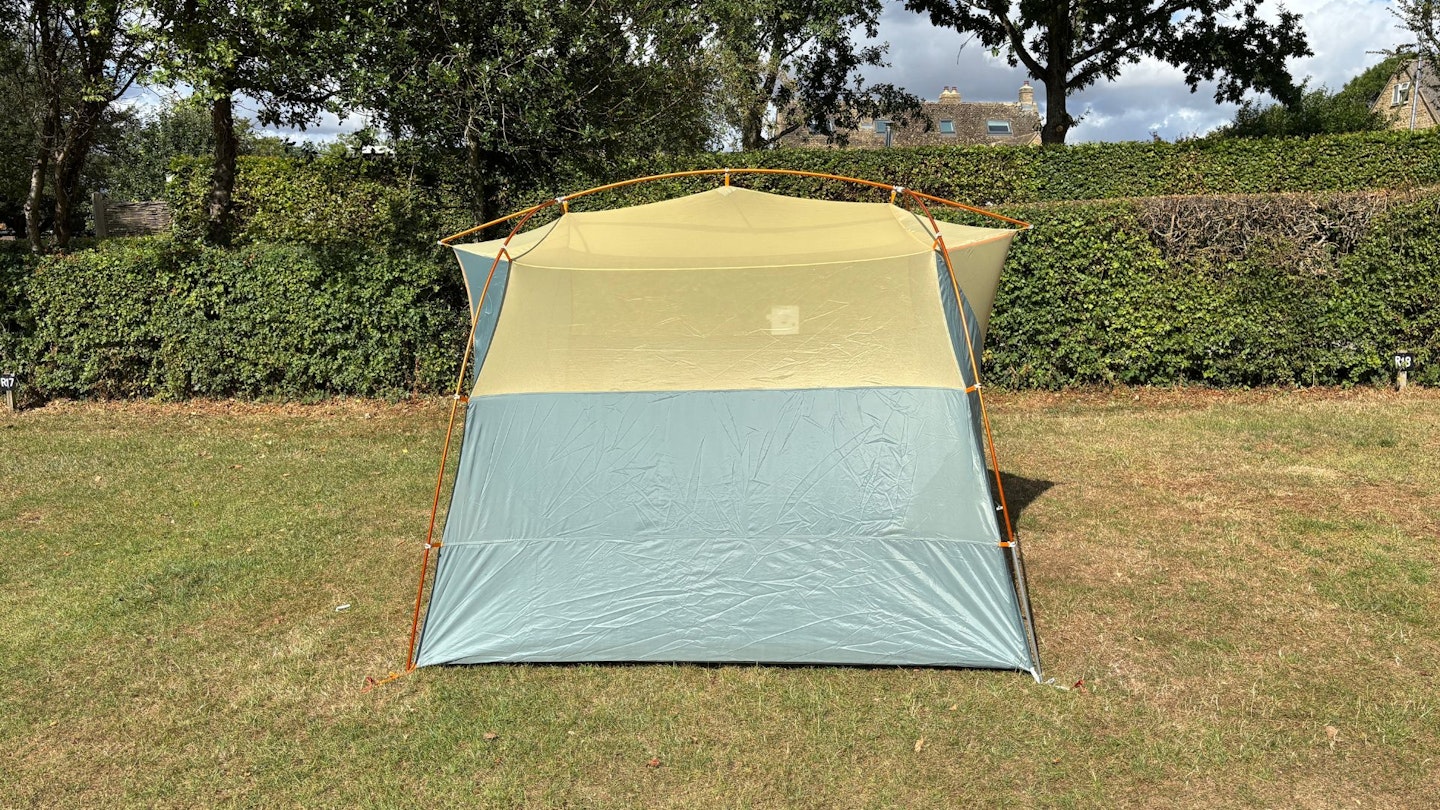
From here, you’ll want to peg out the remaining loops on the flysheet and adjust the tension straps in the four corners.
Then it’s just a case of pegging out the guylines, only, there aren’t enough pegs to do so! This isn’t unusual, particularly with some US tent brands, but it is a pain, particularly if a stiff breeze is blowing through.
All in all, the total pitching time at a casual pace was 20 minutes, though that was me on my own. If you had two people or put some pace into it, you could easily get that down toward 10 minutes.
Packing down is a reversal of the process outlined above and it’s a quick and painless process. The storage bag has plenty of space and you can have the whole thing down and packed away within 10 minutes.
Shape, structure and internal liveability

As is typical across the industry, while this is classed as a four-person tent, it’s unlikely to be used as one very often.
The inside of the tent contains one main sleeping area, a front vestibule and a smaller rear vestibule. That sleeping area took my double Big Agnes Captain Comfort Deluxe mattress and my single Exped Megamat side by side, but there was no spare space leftover.
You could definitely fit two adults and two children in there, as long as you don’t mind being cosy. Four adults is doable, too, but you’d be shoulder to shoulder and probably wouldn’t sleep very well.
In both scenarios, you’re not really left with much room for your stuff, unless you don’t mind bags at the bottom of your mattress or sleeping mat.

The porch area at the front is reasonably roomy for this type of tent, with enough space for two people to sit comfortably on camping chairs, while you could also store some kit there. Thankfully, there’s a rear entrance too, so if you do end up packing the main vestibule with kit there’s another way in and out.
Many compact three or four-man tents don’t allow you to stand up, which is and is not the case here depending on your height. The official head height is 183cm (6ft). I’m 187cm (6ft 2in) and had to bend my neck down when standing.
Ultimately, I’d say if you’re below 180cm (5ft 11in) then you should be okay, but that only applies to the centre of the inner tent, as the ceiling tapers and the porch is lower still.
Another thing to note is that the tent’s flysheet is a light colour, while the inner tent is predominantly mesh. As such, it’s a bright tent to be inside of, so don’t expect any lie-ins in darkness.
Weather protection
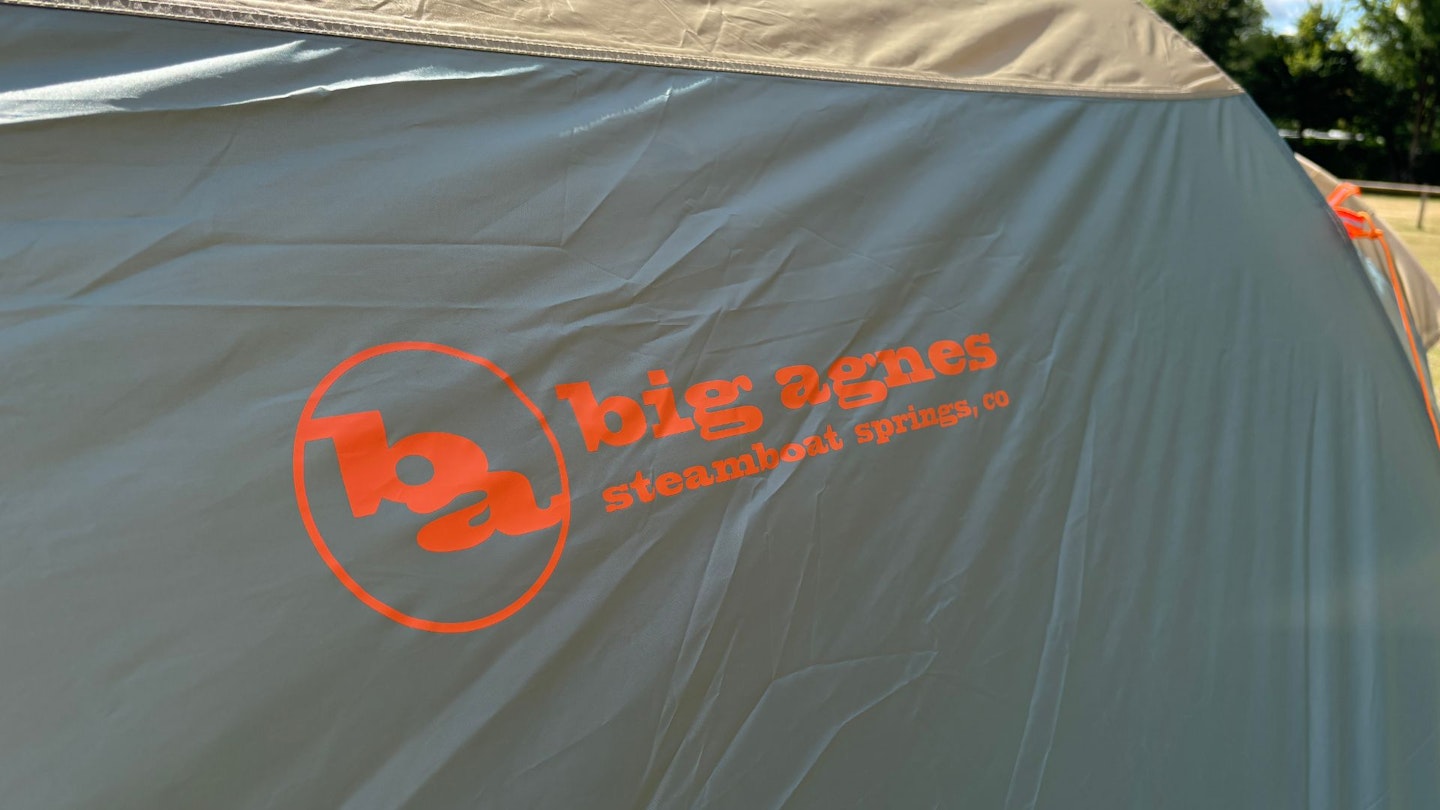
So here’s where there’s a slight question mark. The shortage of pegs for the guylines means further investment to make this tent solid in windy weather, which feels criminal when the tent costs £599.99 ($599.95).
While I didn’t face any particularly gusty situations during testing, I do wonder how much those steep sidewalls will catch the wind. So it’s key that those guylines are pegged out.
Thankfully, though, the flysheet is easy to pull to optimum tautness, which helps in both wind and rain.
The main concern here is that the flysheet and groundsheet both have a hydrostatic head of 1,500mm. It didn’t cause me any issues during a short summer downpour and LFTO’s Fliss Freeborn has used other Big Agnes tents with identical ratings without much trouble, but it’s not confidence-inspiring if you’re likely to be sat in sustained heavy deluges.
And that’s particularly the case where the groundsheet is concerned. As we’ll come onto a little later, you’ll definitely want to invest in an additional footprint to go under it.
Condensation
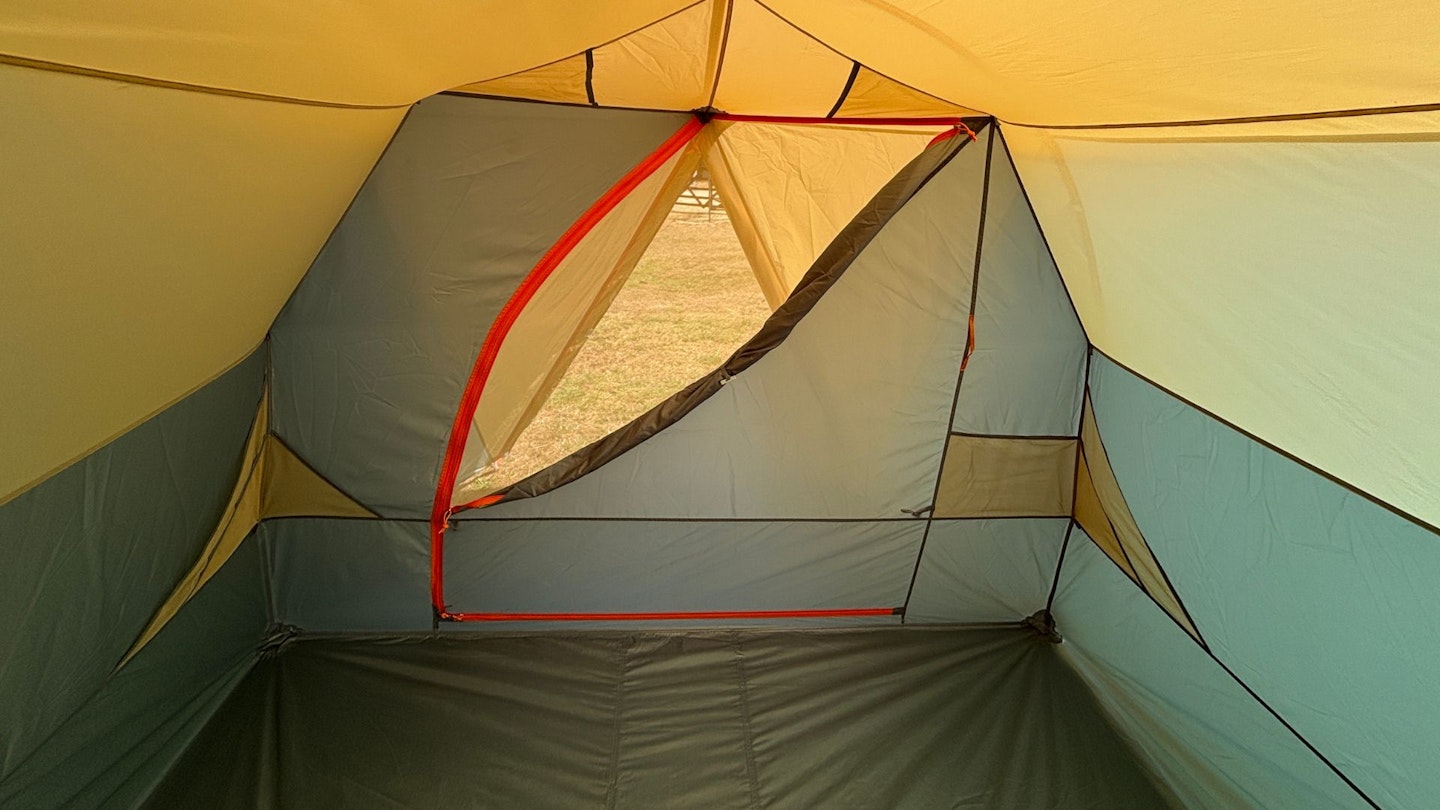
Given the lightweight fabrics, excessive mesh on the inner and the large gaps at the bottom of the flysheet, this tent is pretty good from a condensation perspective.
That said, there aren’t any vents and if there’s three or four of you inside and conditions conspire against you then you may experience some moisture on the inner of the fly.
Still, it’s on par if not better than a lot of competitors.
Weight and pack size

The weight and pack size of this tent is impressive, especially considering the feature set and the space you get inside.
With everything packed away into the storage bag the whole thing weighs 6.89kg and measures out to 65x46x19cm.
The trade-off here is durability, though, as the fabrics employed here are super lightweight. The fly is made from 75D polyester taffeta, the inner tent is made from the same, plus large sections of 40D nylon mesh, while the groundsheet is also made from 75D polyester taffeta.
It means care must absolutely be taken when handling this tent and I would fully recommend investing in an additional footprint to go underneath. The groundsheet on my test model came through unscathed, but it does feel more fragile than ideal.
Features
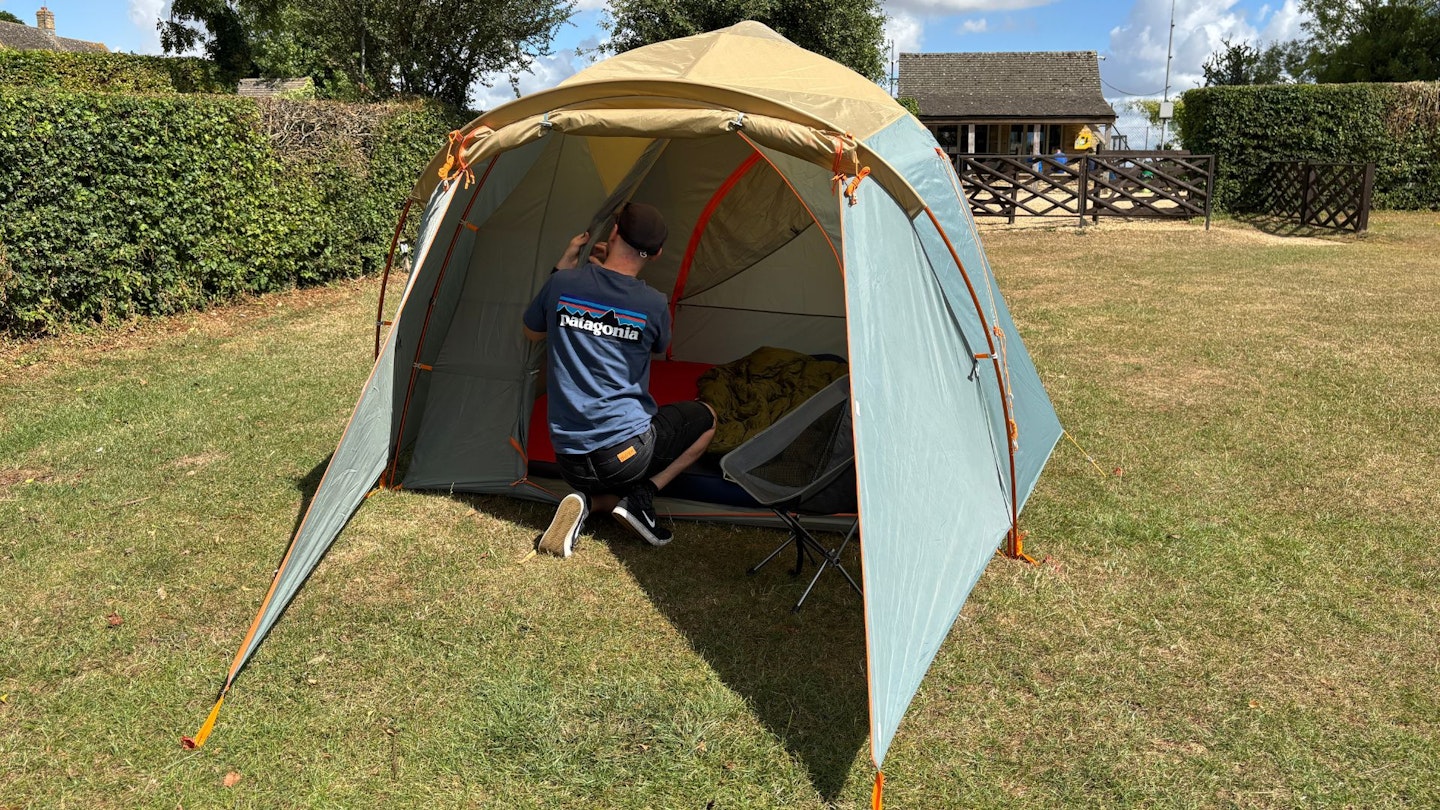
Despite being lightweight and packable, the Bunk House 4 has incorporated some very good features. It’s nothing particularly groundbreaking, but you’d be surprised by how many tents can get the basics wrong.
We’ve mentioned the two vestibules, but what we’ve not told you is that the main door can be propped up with poles to create a semi-useful little shelter.
On that theme, I’ll also note that all doors fold back tidily, as do the mesh-backed sections on the interior that you can open up for better ventilation.
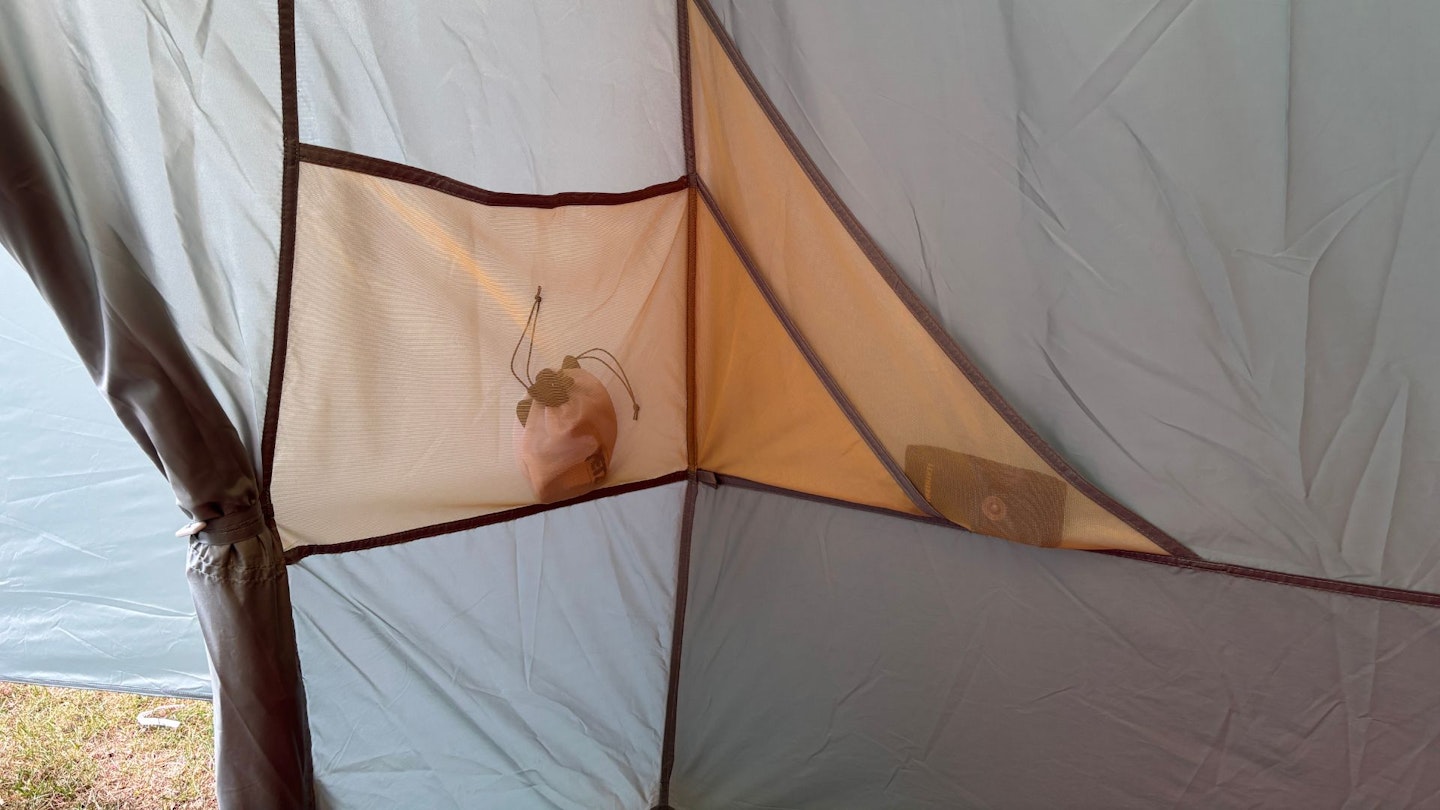
You get more pockets than you’ll know what to do with, including several in each corner and a handful on the ceiling, which are great for holding small camping lights or head torches.
You’ll also find multiple hanging points, which you can use to hang a light or rig up a clothesline.
The shortage of pegs is a pain, but they are at least robust, holding up fine while I hammered them into solid, heatwave-baked ground with a mallet.
Oh, and the final thing to add is that, if you've invested in the additional footprint, you'll be able to use this tent in shelter mode, which uses the flysheet, footprint and poles to create an open shelter that gets you out of the sun or rain.
Verdict
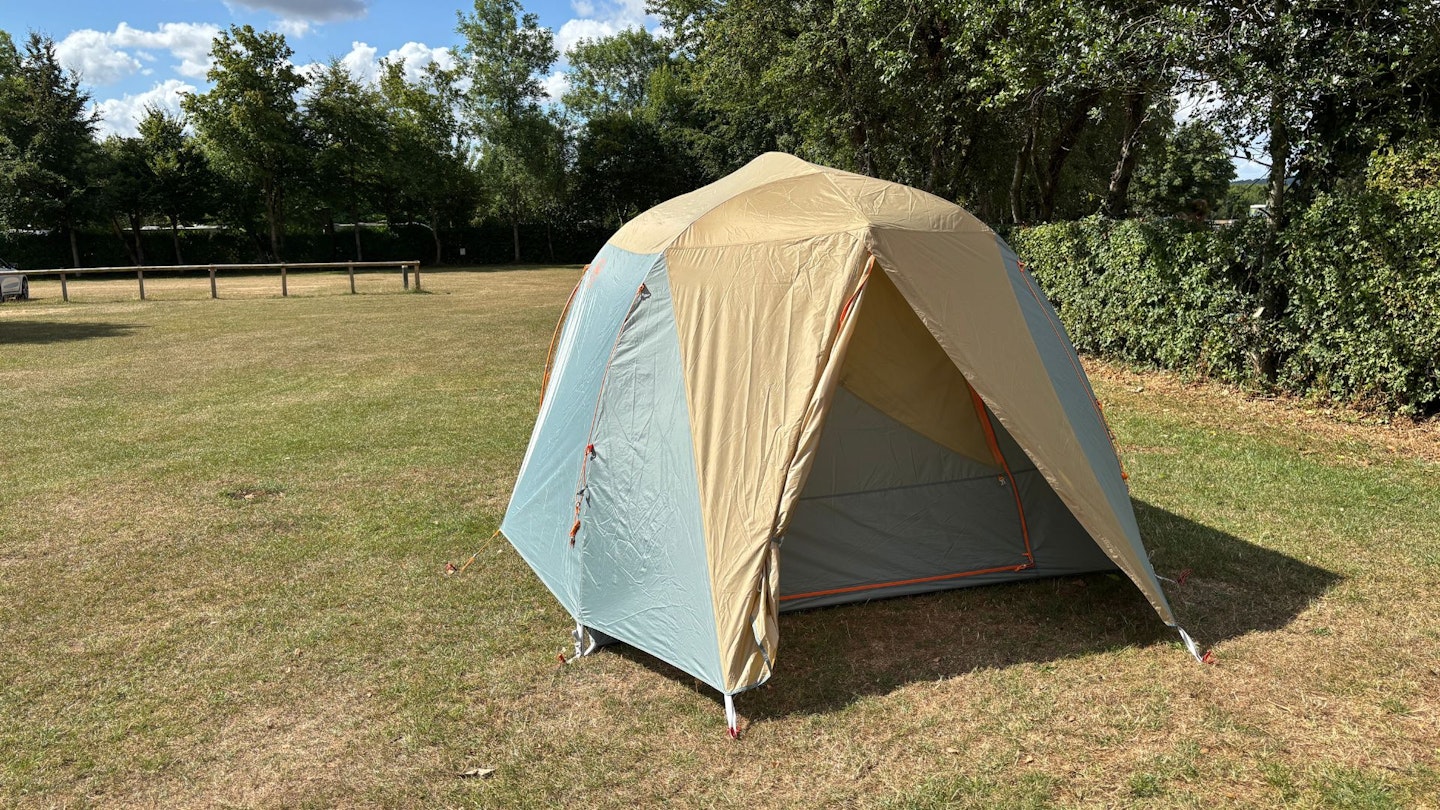
There’s a lot to love about this tent. The weight, pack size and ease with which you can pitch it make it a very attractive proposition.
The two entry points are a big bonus, while the mix of pockets and hanging loops inside are also welcome.
That said, this is a tent that’s best for summer use given the low hydrostatic head. You’ll also want to make sure you invest in an additional footprint and pegs, which is a shame given the high price.
If you're looking for something more spacious, check out our list of the best family tents.
Shop this product
About the author

Rob Slade is deputy editor at LFTO and has been camping, hiking and reviewing gear for work and pleasure for years. He previously worked as content editor at 220 Triathlon and, before that, editor at Adventure Travel magazine (which is now called Wired For Adventure). He's camped all over the world, including New Zealand, Jordan and across the UK.







